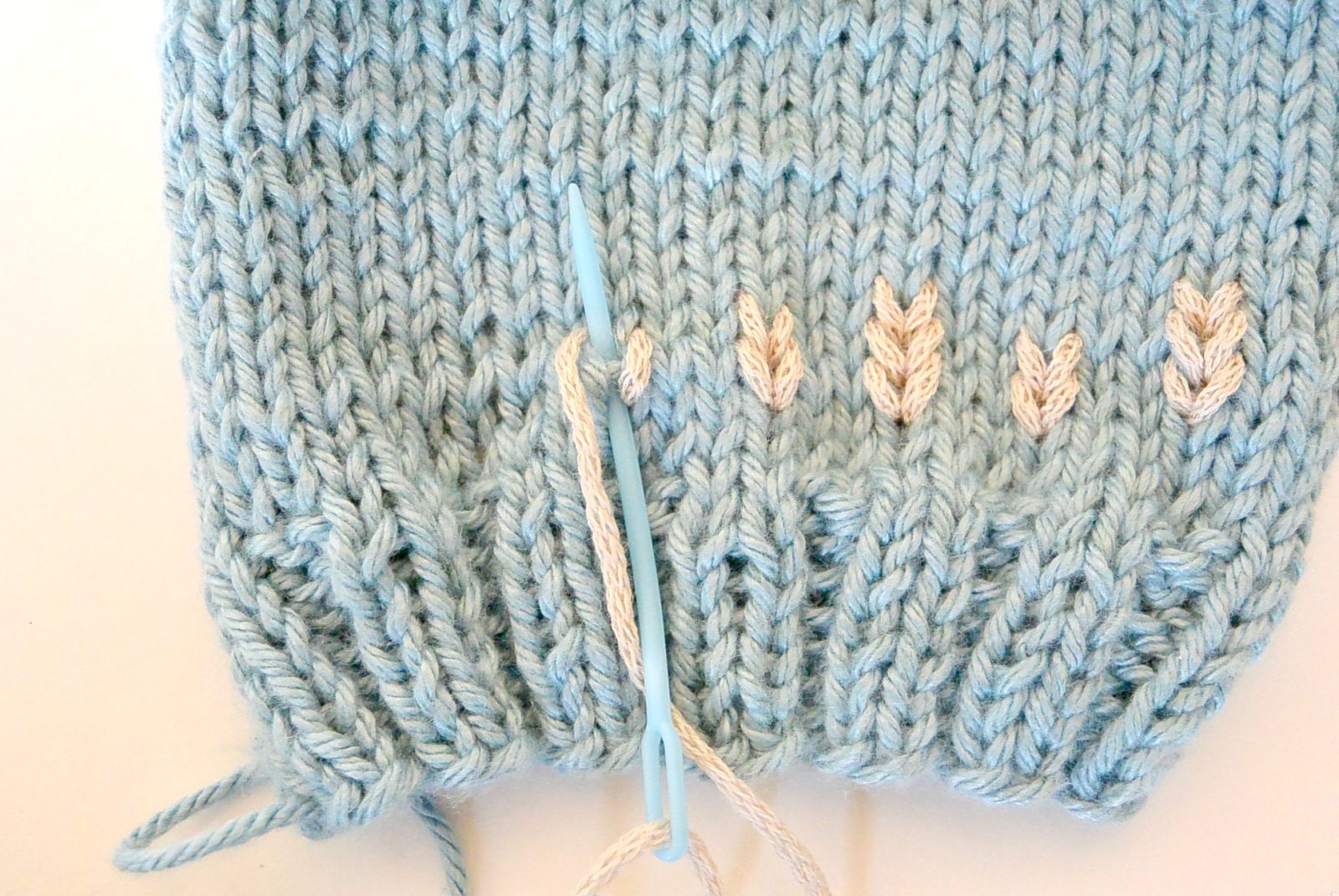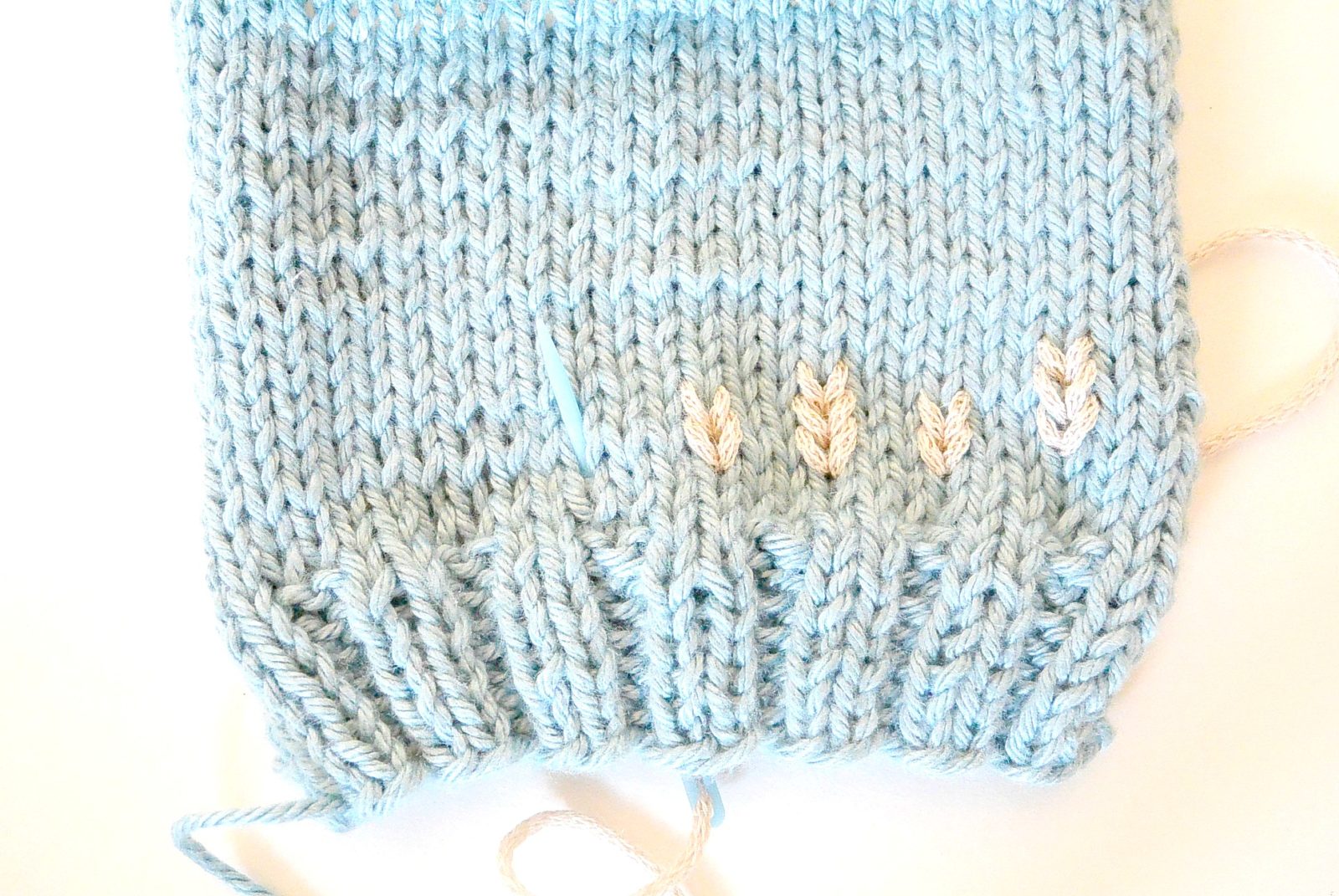

This is the video I made to show the method I used to create Duplicate Stitch for this KAL. I’m totally freaked out over the GDPR requirements and have temporarily put the site in maintenance mode until I understand everything I need to do. Please note that the original blog post is under wraps currently. Fasten off with long yarn tail (approximately 3 times the width of square).īind Off your Stitches and weave in the ends. I used Seaspray Mist (green) and Rose Mist (pink)ĬO 25 Stitches using the long tail CO methodīorder Rows 1-4: Rep Border Row 2, 4 times.īO in pattern for Border Row 2. Exact gauge is not critical for this project. On the right side the weaving is somewhat visible, but this would not be as much of an issue when you are using the same yarn you knit with.Completed square = 6″ (15 cm) in pattern. The design can be found below on the last page. Now it’s time to add the face (my favorite part). Make pompom using a pompom maker and attach to the top of the hat. Secure the tail tightly on the inside and weave in the end. Insert tail into the hat through the middle and pull to close up the top. The tension of the fabrics secures the yarn tail very tightly. Cut yarn and weave through the remaining stitches. Then, you weave back through the skipped bumps. However, instead of going under every bump, you alternate. This technique is called the duplicate stitch, and its a way of going over completed stockinette stitch with a whole new color. Like the zig-zag, you weave your yarn diagonally under the "bumps". This method is very secure, but it is a little more bulky and noticeable than the other two methods. See more ideas about knitting, stitch, embroidery stitches. I have framed the zig-zag with my fingers and you can see the contrasting yarn barely shows. Explore Georgia Greens board 'DUPLICATE STITCH/EMBROIDERY ON KNITTING', followed by 180 people on Pinterest.
#DUPLICATE STITCH KNITTING SERIES#
This time I carefully wove my yarn under a series of diagonal "bumps". The Zig-Zag is usually my favorite method for weaving in loose ends because it is very inconspicuous and does not add as much bulk as the duplicate stitch. Even though I used a contrasting yarn color, you can hardly see the duplicated stitches on the right side of my sample. For demonstration purposes I knit one row of my white swatch in a green so you can easily follow the path I duplicated in orange. The idea of the duplicate stitch is to copy or trace the path of one row of stitches, on the wrong side of your knitting, as you weave in the end of the yarn, hence the name.įor demonstration purposes I knit one row of my white swatch in a green so you can easily see the path I duplicated in orange. Some experienced knitters will tell you that using the duplicate stitch is the proper way to weave in the ends. I knit up a little stockinette swatch to demonstrate three different ways to weave in your yarn tails - the duplicate stitch method, a zig-zag method and a double diagonal method. For items like hats, scarves, blankets and socks, it can be a little trickier. When you are knitting a pieced garment, like a sweater, it's not unusual to weave the loose ends into a seam. The duplicate stitch is a simple method for using a tapestry needle and yarn to add text, pictures or facial features to a basic stockinette project. The yarn ends should be woven in so they do not interfere with the elasticity of your fabric.


The yarn ends must be secure so your work doesn't unravel after the first wash.No matter how you choose to weave in the ends, there are three important guidelines to consider: It depends a lot on what you have made, the stitches in your design and the type of yarn you have used. It is called duplicate stitch because you are literally duplicating knit stitches you have already made. But after spending hours, days or even months creating a knit piece, neatly tucking in those yarn tails is necessary to give your work that finished look.Īlthough some people may strongly disagree with what I'm about to say, there's no single "right" way to weave in the ends. Duplicate Stitch (also known as Swiss Darning) for knitting is when you use a length of yarn in a contrasting color to embroider new knit stitches on top of a field of stockinette stitch to create a design, motif or pattern. It’s not too late to join the Stitch Sampler Scrapghan CAL You can find all the Scrapghan Crochet Along info HERE. I have yet to meet a knitter that enjoys weaving in the loose ends. The Lemon Peel Stitch is one of my favorite stitch es Ive used in a number of projects like my Color Kaleidoscope Blanket and Cowl Sweater Vest.


 0 kommentar(er)
0 kommentar(er)
